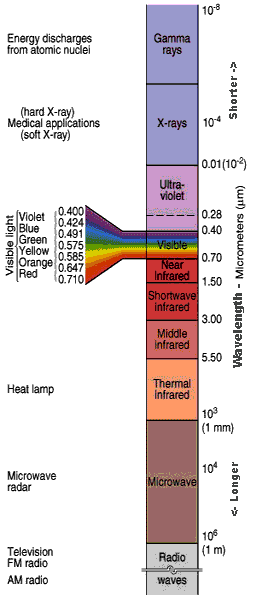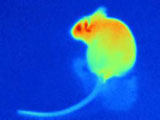THE NATURAL ENVIRONMENT
Geography 101
ToC
SKY
Origin
Air
Layers
Sunlight
Scatter
Refract
Hawai'i
Sunlight
 Solar radiation is a component of climate, just like temperature, rainfall, and humidity. Understanding its intensity and distribution is important to scientists because sunlight energy powers virtually all environmental phenomena at Earth's surface, from feeding plants to driving hurricanes to eroding mountains. It produces rainbows, burns human skin, heats the air, lifts water into mountains, peps up geckos, builds beaches, and solar heats homes. Solar radiation has other names, including insolation and shortwave radiation, but for our purposes, we will generally refer to it simply as sunlight.
Solar radiation is a component of climate, just like temperature, rainfall, and humidity. Understanding its intensity and distribution is important to scientists because sunlight energy powers virtually all environmental phenomena at Earth's surface, from feeding plants to driving hurricanes to eroding mountains. It produces rainbows, burns human skin, heats the air, lifts water into mountains, peps up geckos, builds beaches, and solar heats homes. Solar radiation has other names, including insolation and shortwave radiation, but for our purposes, we will generally refer to it simply as sunlight.
 Sunlight is electromagnetic (em) radiation emitted at the surface of the Sun. All em radiation travels through space at the same speed (300,000 km/sec or 186,000 miles/second), but varies in wavelength over the electromagnetic spectrum, as shown in the diagram to the right. Regions of the em spectrum are grouped by wavelength into familiar bands, such as X-rays, ultraviolet (UV), visible light, microwaves and radio waves. Sunlight energy contains mostly UV (8%), visible light (39%), and infrared (53%). If you look at the diagram, you can see that visible light is further subdivided into wavelength bands that our eyes perceive as colors, with blue and violet having the shortest wavelengths and red and orange having the longest.
Sunlight is electromagnetic (em) radiation emitted at the surface of the Sun. All em radiation travels through space at the same speed (300,000 km/sec or 186,000 miles/second), but varies in wavelength over the electromagnetic spectrum, as shown in the diagram to the right. Regions of the em spectrum are grouped by wavelength into familiar bands, such as X-rays, ultraviolet (UV), visible light, microwaves and radio waves. Sunlight energy contains mostly UV (8%), visible light (39%), and infrared (53%). If you look at the diagram, you can see that visible light is further subdivided into wavelength bands that our eyes perceive as colors, with blue and violet having the shortest wavelengths and red and orange having the longest.
|
|
BOX 1 |
The energy in sunlight at all wavelengths is collectively referred to as shortwave, or solar, radiation. This term distinguishes sunlight from the longwave, or terrestrial, radiation that is emitted by Earth in the middle and thermal infrared wavelengths. If you look at the diagram, you can see that terrestrial radiation occupies the bands between microwave (longer) and shortwave infrared (shorter) wavelengths. We discuss longwave radiation emitted by the Earth further in Chapter 3.
Human eyes can only detect visible light wavelengths between 0.4 and 0.7 micrometers. Other creatures, however, have different radiation detectors. Bees and butterflies, for example, can see into the ultraviolet range. Flowers take advantage of this by reflecting bright patterns in UV to attract pollinators. Pit vipers, on the other hand, can sense into the near infrared range. Of course, humans have engineered electronic detectors that can sense every possible wavelength, allowing surface temperature mapping from satellite and X-ray observations of distant stars. Nonetheless, our eyes are remarkably discerning sensors. And it is probably no coincidence that they are most sensitive to green light, the most intense solar wavelength.
 |
If we could see ultraviolet and infrared wavelengths.... The image at the right shows daisies in visible light (upper left) and UV (lower right). The bright UV circle pattern invites bees to land in the flower center. The image at the left approximates what a mouse would look like to a pit viper at night using its pit-organ infrared sensors. |
 |